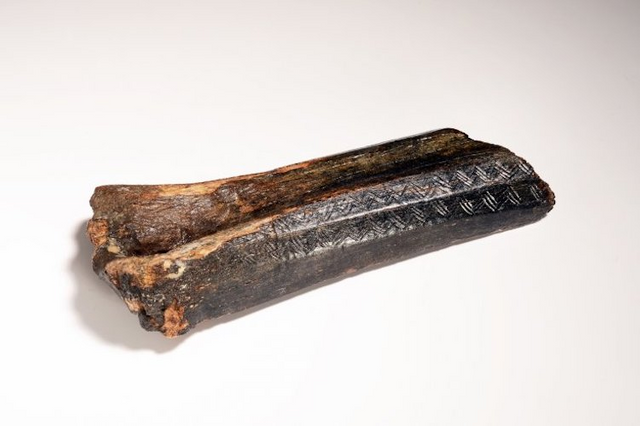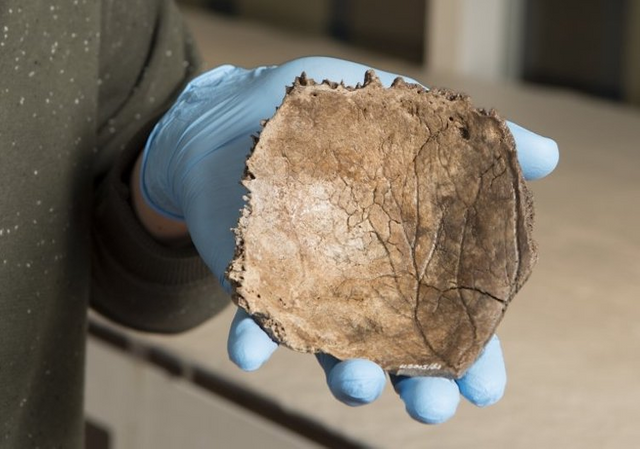A 13,500-year-old bison bone in the North Sea, which has been installed on the network, has now been recorded as the oldest artwork in the Netherlands.

The drawn bison bone in the North Sea is dated to the last ice age. C: Rijksmuseum van Oudheden
The finding was documented during a survey on the human settlement, which was once covered with ice and then became the North Sea. At that time, there were hunter-gatherer people living in this area.
In the new article published, a piece of human skull dating back 13,000 years ago was documented as the oldest known human remains in the Netherlands.
The bison bone, drawn with a zigzag pattern, was caught in 2005 in a network of fishing vessels bordered by the Dutch part of the continental landscape. Later, he was a private collector who knew this fisherman, and he took it from him.
(Found 6,000 year old baby buried in Anne's lap in the Netherlands)
The collector gave permission to university and museum experts to examine this manuscript using carbon isotopes.
Investigators discovered that this work was 13,500 years old and that it was the oldest artifact ever found in the area that made up the Netherlands.
Similar patterned objects, dating to about the same years, were found in three different European regions. Therefore, it is thought that this pattern may have been a fashion before the date.
Earlier in Wales, there was a drawn horse jawbone, a drawn deer horn in France, and a canadian horned horn in Poland. Above the deer horn on the poles is a figure that the researchers think is a woman who has opened her legs.
(Silk dress was found in the 17th century ship in the Netherlands)
Luc Amkreutz, the head writer of the research, thinks that such works may have been used for ritual purposes.

The 13,000-year-old piece of skull is thought to be the oldest modern human remains in the Netherlands. C: Rijksmuseum van Oudheden
The oldest human remains in the Netherlands
Experts in the research also identified the 13,000-year-old human skull in the North Sea. This skull piece belonging to the left side of the skull is characteristic of being the oldest modern human (Homo sapiens) remains found in the area of the Netherlands today.
It is believed that the person to whom the skull part belonged belonged to an adult who died between the ages of 22 and 45. DNA testing will be done to determine whether this piece belongs to a woman or a man.
The notch in the bone suggests that one has a vitamin deficiency in childhood, anemia, or possibly scurvy or rickets.
very interesting info to add history science
Downvoting a post can decrease pending rewards and make it less visible. Common reasons:
Submit
thank you for nice comment.
Downvoting a post can decrease pending rewards and make it less visible. Common reasons:
Submit